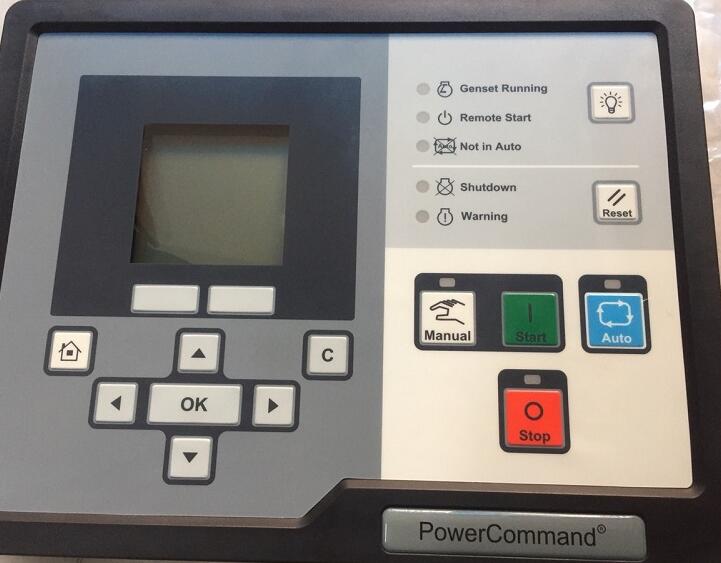This instruction show you guide on how to solve PCC1302 PowerCommand trouble code 441 battery voltage low warning.

Related Contents:
2024 InPower V14.5 Pro V12 Diagnostic Software Free Download
PowerCommand Diagnostic 9 Pin Adapter Cable for InPower
Possible Causes:
1 Damaged battery cable connections
2 Low battery voltage
3 Bad battery ground connection
4 Damaged accessory wiring at B+
5 Damaged OEM battery harness
6 Damaged engine harness
7 Discharged or defective battery
8 Alternator not functioning properly
9 Incorrect battery setting
Diagnosis and Repair:
1 Damaged battery cable connections
a Inspect the battery cable connections.
a Inspect connections for corrosion.
b Inspect connections for loose connections.
2 Low battery voltage
aMeasure the battery voltage.
aMeasure the battery voltage from the positive (+) terminal to the negative (-) terminal. If the voltage is between 11.0 to 14.2 V on a 12 VDC system and 17.3 and 34.7 V on a 24 VDC system, then the voltage is within normal range.
3 Bad battery ground connection
a Inspect the battery ground connection.
a Disconnect the engine harness.
b Measure the resistance from the negative (-) battery terminal to the engine block ground. If the resistance is less than 10 ohms, then there exists proper grounding. If the resistance is greater than 10 ohms, then the battery ground connection is in need of repair.
4 Damaged accessory wiring at B+
a Check for add-on or accessory wiring at the positive (+) terminal of the battery.
a Starting at the positive (+) terminal, follow any add-on or accessory wiring and examine the wire(s) for damaged insulation or installation error that can cause supply wire to be shorted to the engine block.
5 Damaged OEM battery harness
a Inspect the OEM battery harness and the Inline E connector pins.
a Disconnect the OEM battery harness from the Inline E connector.
b Inspect for corroded pins, bent or broken pins, pushed back or expanded pins.
c Inspect for evidence of moisture in or on the connector.
d Inspect for missing or damaged connector seals.
e Inspect for dirt and debris in or on the connector pins.
b Check for an open circuit.
a Disconnect the OEM battery harness from the engine.
b Disconnect the positive (+) battery terminal.
c Measure the resistance from all pins being supplied by unswitched battery on the OEM battery harness at the Inline E connector to the positive (+) battery terminal connector. If the resistance is less than 10 ohms, then there is not an open circuit. If the resistance is greater than 10 ohms, then there is an open circuit that is in need of repair.
c Check for a short circuit from pin to pin.
a Disconnect the engine harness.
b Disconnect the positive (+) battery terminal.
c Measure the resistance from all unswitched battery pins on the Inline E connector to all other pins on the Inline E connector. If the resistance is more than 100k ohms, then there is not a short circuit. If the resistance is less than 100k ohms, then there is a short circuit that is in need of repair.
6 Damaged engine harness
a Inspect the engine harness fuse connection. Inspect for correct installation.
b Check the engine harness fuse.
a Disconnect the 20 amp fuse from the OEM harness.
b Inspect that the 20 amp to verify the fuse is not blown.
c Inspect the engine harness and the extension harness inline connector pins.
a Disconnect the engine harness.
b Inspect for corroded pins, bent or broken pins, pushed back or expanded pins.
c Inspect for evidence of moisture in or on the connector.
d Inspect for missing or damaged connector seals.
e Inspect for dirt and debris in or on the connector pins.
d Check for an open circuit.
a Disconnect the OEM battery harness from the engine connector.
b Disconnect the positive (+) battery terminal.
c Measure the resistance from all pins being supplied by unswitched battery on the OEM battery harness at the Inline E connector to the positive (+) battery terminal connector. If the resistance is less than 10 ohms, then there is not an open circuit. If the resistance is greater than 10 ohms, then there is an open circuit that is in need of repair.
e Check for a short circuit from pin to pin.
a Disconnect the engine harness.
b Disconnect the positive (+) battery terminal.
c Measure the resistance from all unswitched battery pins on the Inline E connector to all other pins on the Inline E connector. If the resistance is more than 100k ohms, then there is not a short circuit. If the resistance is less than 100k ohms, then there is a short circuit that is in need of repair.
7 Discharged or defective battery
a Measure the voltage of the battery with a voltmeter. Battery voltage should be 12 VDC or greater in a 12 V system and 24 VDC or greater in a 24 V system. If the battery voltage is low, check the electrolyte level. Replenish the electrolyte level if low and recharge the battery; the specific gravity of a fully charged lead acid battery is approximately 1.260 at 80 °F (27 °C).
b If the battery cannot hold adequate voltage, then replace the battery.
8 Alternator not functioning properly
a Check the engine DC alternator. If charging voltage is not 12-14 VDC for a 12 V system, or 24-26 VDC in a 24 V system, replace the alternator.
9 Incorrect battery setting
a Verify that the battery voltage (12V or 24V) matches calibration.
More repair cases please refer to:PCC1302 PowerCommand trouble repair